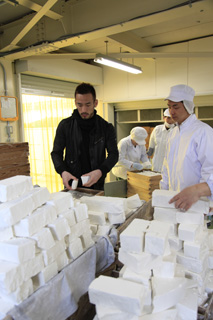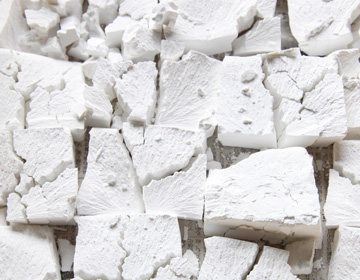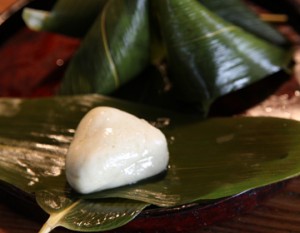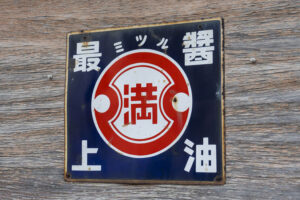“Yoshino Kuzu” Indispensible to Japanese Food
Kuzu has always had a strong bond with the Japanese, and it is also one of the ”7 plants of Autumn”. The fiber taken from the vine of Kuzu was used for cloth, the leaves for livestock feed, the roots for Chinese medicine, and the flowers used for medicine for hangovers. The charming violet flowers have been adorned by many and have been mentioned in many poems in the compilation ”Manyoshu”.
Another popular favorite worth mentioning about kuzu is the Japanese sweets, ”kuzukiri”. Surprisingly, this seemingly traditional sweets made from the roots of the kuzu plant has a short history, starting from the middle of Edo period. Kuzu is smooth and is mellow to the palate, used for Japanese sweets and to thicken soup for Japanese cuisine, and as people became more health conscious, it has become increasingly popular.
Nara is famous for Yoshino kuzu. Here at Kurokawa Honke, kuzu flour has been made for over 400 years, the method not much different from the past.

Repetitious and redundant process
People specializing in digging the kuzu plants are called ”Yamakata” and they are responsible for bringing the kuzu back from the mountains. The kuzu plants are crushed and are purified in the well repeatedly. Then the top layer is skimmed off, leaving the starchy substance that has been deposited underneath.
This backbreaking procedure referred to as ”Yoshinozarashi” is repeated multiple times. The kuzu is then dried for 2 months and becomes ”honkuzu”.
Kuzu flour made at Kurokawa Honke is of the highest quality and is dedicated to the Imperial Family. It was endorsed with the ”highest quality ever” by the Yamato Matsuyama feudal lord upon the company’s foundation. They have strived to live up to this great honor ever since, protecting tradition and quality.












